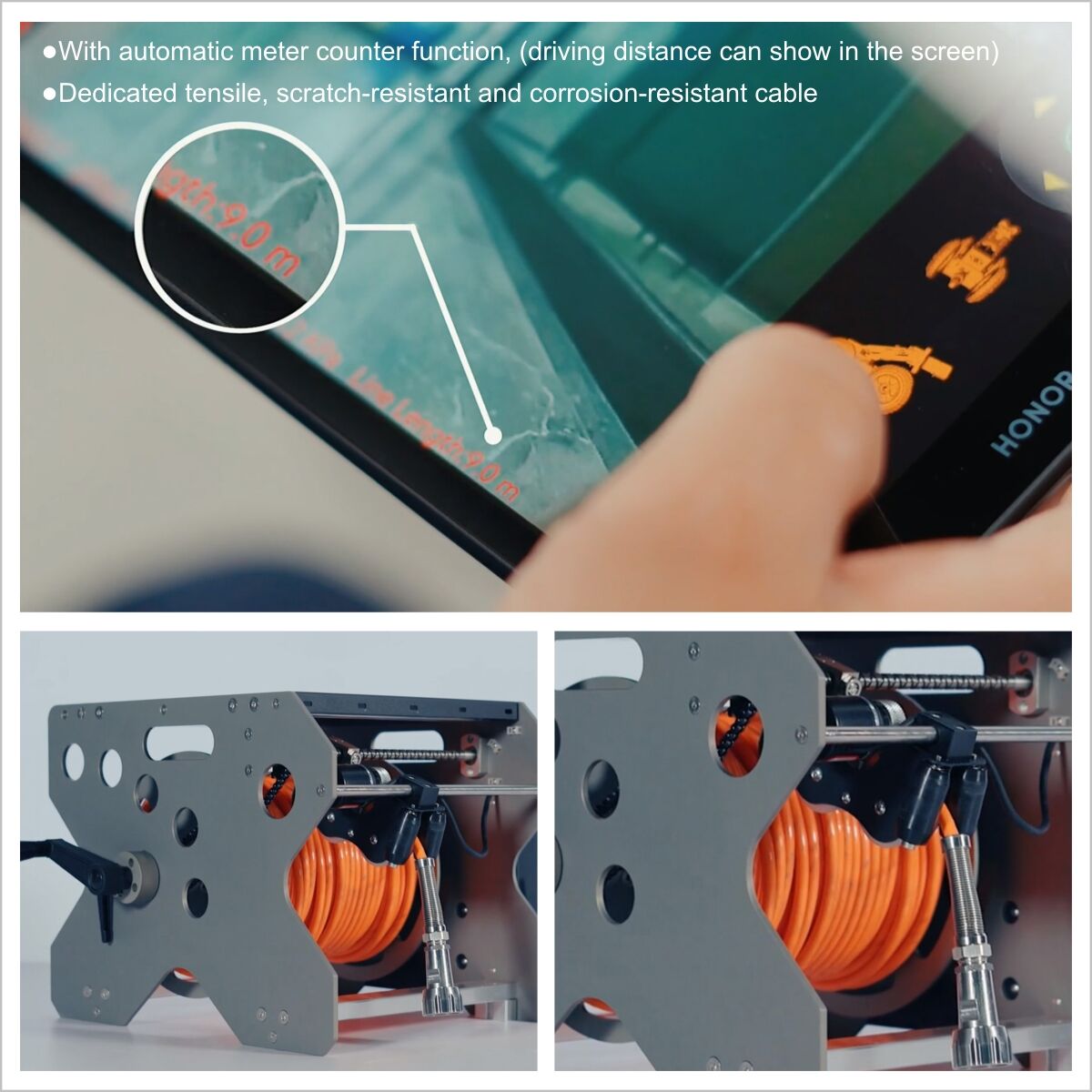Essential Guide to Maintaining and Repairing Plumbing Inspection Equipment
Professional plumbers rely heavily on sewer camera systems to diagnose pipe issues accurately and efficiently. When these vital inspection tools malfunction, it can bring operations to a costly halt. Understanding how to quickly troubleshoot and resolve common sewer camera problems is crucial for maintaining productivity and delivering reliable service to customers.
Whether you're dealing with a frozen control reel, degraded image quality, or failing LED lights, this comprehensive guide will walk you through the most effective solutions. We'll explore both preventative maintenance strategies and emergency fixes to keep your inspection equipment operating at peak performance.
Understanding Sewer Camera Components and Common Failure Points
Critical Parts of Professional Inspection Systems
A professional sewer camera system consists of several interconnected components that must work in harmony. The push cable houses sensitive wiring that powers the camera head and transmits video signals. The control unit contains electronics for displaying footage and managing camera functions. The camera head itself incorporates LED lights, imaging sensors, and protective housing designed to withstand harsh pipe environments.
Understanding how these components interact helps identify potential failure points. The push cable experiences significant mechanical stress during operation. Control units are susceptible to moisture damage and electrical issues. Camera heads must resist impacts while maintaining clear optical properties and watertight seals.
Environmental Factors Affecting Performance
Environmental conditions play a major role in sewer camera reliability. Extreme temperatures can affect electronic components and make cables less flexible. Moisture intrusion through damaged seals leads to corrosion and electrical shorts. Debris buildup on camera lenses degrades image quality. Chemical exposure from cleaning agents or waste materials can deteriorate protective coatings and seals over time.
Regular exposure to these harsh conditions makes preventative maintenance essential. Proper storage, careful handling, and routine inspection of vulnerable components help prevent failures before they occur.
Resolving Mechanical Issues with Push Cables and Reels
Diagnosing Cable Stiffness and Reel Problems
When a sewer camera push cable becomes difficult to manipulate or the reel freezes, several factors may be responsible. Cold temperatures can make the cable materials less pliable. Dirt and debris accumulation inside the reel mechanism creates friction. Bent or kinked cables may bind when spooling. Physical damage to the reel components can prevent smooth operation.
Start troubleshooting by inspecting the cable for visible damage or extreme bends. Check the reel mechanism for debris and proper lubrication. Test cable flexibility at different points to isolate stiff sections. Verify the reel turns freely when disconnected from the cable.
Maintenance and Repair Solutions
Regular cleaning and lubrication prevent many mechanical issues. Use approved cleaning solutions to remove buildup from cables and reel components. Apply suitable lubricants to moving parts based on manufacturer recommendations. Replace damaged cable sections rather than attempting repairs that may fail during use.
For frozen reels, carefully disassemble the mechanism to remove debris and inspect for worn parts. Clean and lubricate all components before reassembly. Consider upgrading to sealed bearing systems for improved reliability in demanding conditions.
Addressing Video Quality and Lighting Problems
Improving Blurry or Distorted Images
Poor image quality from a sewer camera can stem from several sources. Scratched or dirty camera lenses reduce clarity. Moisture contamination creates foggy views. Damaged video cables cause signal interference. Electronic issues in the camera head or control unit may degrade image processing.
Begin by thoroughly cleaning the camera lens using appropriate materials. Check for moisture behind the lens cover and seal integrity. Test video connections for loose fits or corrosion. Verify proper function of focus mechanisms if equipped.
Troubleshooting LED Light Failures
LED lighting problems significantly impact inspection capability. Individual LED failures reduce illumination uniformity. Driver circuit issues cause flickering or complete failure. Water intrusion can short out lighting systems. Battery or power supply problems may limit LED output.
Test LED function with direct power when possible. Inspect wiring and connections for damage. Check power supply voltage under load. Consider upgrading to newer LED systems with improved reliability and brightness.
Preventative Maintenance Best Practices
Daily Care and Inspection Routines
Implementing consistent maintenance procedures extends sewer camera life and prevents unexpected failures. Clean equipment thoroughly after each use, paying special attention to the camera head and cable. Inspect cables for damage or excessive wear. Test all functions before storing equipment. Document any unusual behavior for early problem detection.
Store equipment in climate-controlled conditions when possible. Use protective covers to prevent dust accumulation. Maintain battery systems according to manufacturer guidelines. Keep detailed maintenance records to track recurring issues.
Professional Service and Upgrade Considerations
Regular professional servicing helps catch developing problems early. Schedule annual inspections and calibration checks. Update firmware and software as recommended. Consider preventative replacement of high-wear components before failure occurs.
Evaluate the cost-effectiveness of repairs versus equipment upgrades. Newer sewer camera systems offer improved reliability and advanced features. Factor in downtime costs when making maintenance decisions.
Frequently Asked Questions
How often should I clean my sewer camera system?
Clean your sewer camera system thoroughly after each use to prevent debris buildup and extend equipment life. Perform a more detailed cleaning weekly, including cable conditioning and reel mechanism maintenance. Schedule professional cleaning and inspection annually.
What causes sudden image quality loss during inspection?
Sudden image degradation often results from moisture intrusion, cable damage, or electrical connection problems. Check for water exposure, inspect cable integrity, and verify all connections are secure. Clean the camera lens and test power supply stability if problems persist.
When should I replace rather than repair my sewer camera?
Consider replacement when repair costs exceed 50% of new equipment value, when parts become unavailable, or when recurring failures impact productivity. Upgrading may be justified by improved technology, enhanced features, or better reliability of newer systems.
Table of Contents
- Essential Guide to Maintaining and Repairing Plumbing Inspection Equipment
- Understanding Sewer Camera Components and Common Failure Points
- Resolving Mechanical Issues with Push Cables and Reels
- Addressing Video Quality and Lighting Problems
- Preventative Maintenance Best Practices
- Frequently Asked Questions

